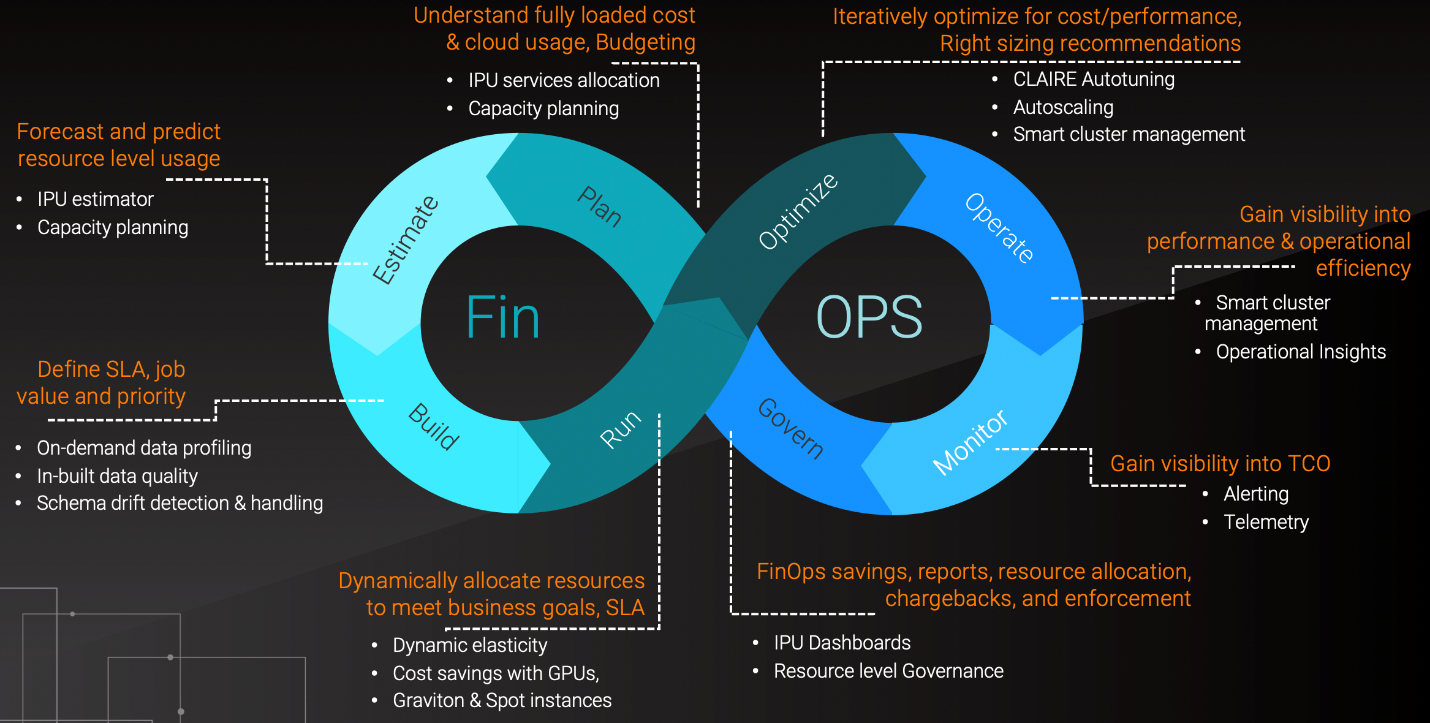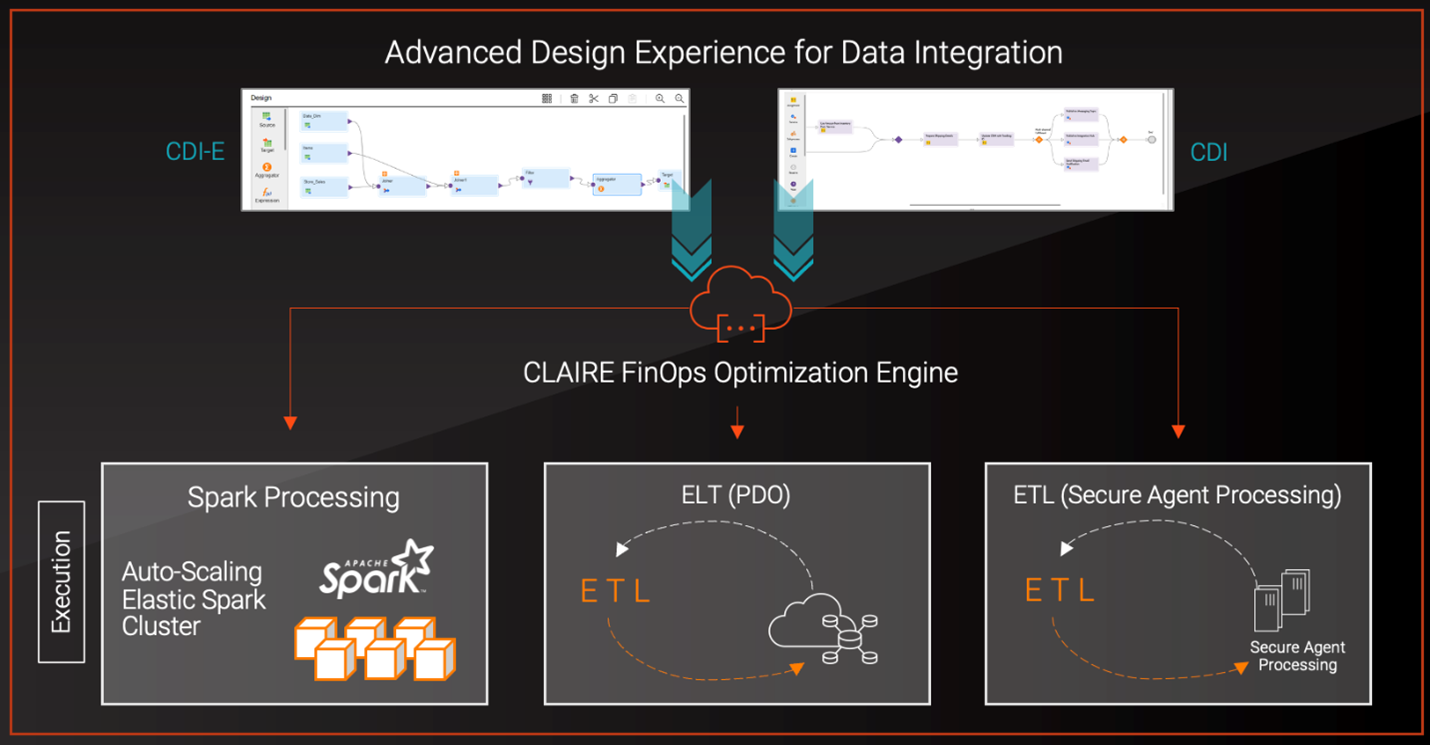Save on Cost Overruns Using FinOps-Powered Advanced Data Integration Services
Co-authored by Rakshith Venkatesh.

Modernizing to the cloud can help organizations contain costs, as they do not need to pay for capital expenses upfront. The ease of setup, ubiquitous availability and elasticity of cloud resources give end users an effortless way to address performance problems — but they can also drive up costs. It’s easy to add more resources as needed without considering the cost implications.
Further, organizations often fail to turn off cloud resources when they’re not in use, which also racks up costs. To exacerbate the problem, many organizations lack proper cost governance and controls, so they end up burning through their cloud credits sooner than intended.
According to a recent survey, 82% of organizations with workloads running in public clouds have incurred “unnecessary” cloud costs.1 This is a grim reality for the many organizations that lack proper cost governance and controls.
How can you avoid such cost overruns and govern the total cost of ownership (TCO) across your software lifecycle? An important first step is to have visibility into the costs, tools and processes.
How FinOps Can Help You Optimize, Govern and Control Cloud Costs
Cloud FinOps offers a framework for providing visibility, control and governance in cloud operations to maximize business value. The FinOps Foundation defines FinOps as an evolving cloud financial management discipline and cultural practice that enables organizations to maximize business value by helping engineering, technology and business teams to collaborate on data-driven spending decisions.2
The scope of FinOps covers the entire software development lifecycle, from development to production. FinOps does not focus solely on “saving money.” It aims to help organizations achieve business objectives by making data-driven decisions on how to best use cloud resources to achieve business goals.
That’s where Informatica’s end-to-end Intelligent Data Management Cloud™ (IDMC) comes in. IDMC is the industry's first and most comprehensive AI-driven data management solution. As part of IDMC, Informatica has built in a variety of FinOps capabilities across the entire software lifecycle. This goes from planning, estimating, building and running, all the way to optimizing, operating, monitoring and governing.

FinOps Capabilities by Phase of the Software Lifecycle
Planning and Estimation Phase
Proper planning plays an essential role in using resources efficiently and preventing cost overruns. The planning phase ensures the right resources are allocated to the right projects and are utilized efficiently. In the planning phase, FinOps also assists with identifying and selecting the most cost-effective resources for your project. This can be accomplished through capacity planning as well as resource estimation and allocation.
Build and Run Phase
The build and run phase focuses on building your applications in a way that is optimized for the cloud. In this phase you can also ensure the applications are run efficiently to meet your performance service level agreement (SLA). FinOps in the build and run phase optimizes your application design for the cloud. It also identifies and fixes inefficiencies in your application deployment and runtime. Informatica IDMC provides the capability to dynamically allocate resources to meet your business goals and SLA in this phase.
Optimize and Operate Phase
After your application is built and running in the cloud, you will need to continuously monitor and optimize it. This will ensure that it is running efficiently and that the cost stays within your budget. The optimize and operate phase identifies opportunities to optimize your application. It also continuously monitors your application and cloud environment to identify issues and prevent costly problems.
With Informatica IDMC’s AI-powered autotuning, autoscaling and smart cluster management services, you can optimize cost performance. In addition, operational insights provide you with visibility into operational efficiency.
Monitor and Govern Phase
In the monitor and govern phase, you can monitor your application and cloud environment for issues to prevent cost overruns. You can also identify and fix issues that lead to cost overruns at this phase. Using Informatica IDMC’s data governance services, you can enforce cost-optimization policies. They also enable you to monitor and report on cloud spending with telemetry, alerting, dashboards and resource-level governance.
Introducing Advanced Data Integration
At Informatica, we’re constantly innovating our IDMC data integration services to help you save costs and maximize your TCO on your cloud journey.
With our 2022 Fall Launch, we are extremely pleased to announce the general availability of Advanced Data Integration. With FinOps-powered Advanced Data Integration, data engineers and developers can use a single, simple, unified no-code canvas for all their data integration and data engineering needs in a cost-performant manner.

Here are a few ways end users can benefit from Advanced Data Integration:
- Data engineers and developers no longer need to decide upfront whether to use extract, transform, load (ETL), extract, load, transform (ELT) or distributed Spark-based computing when building their data pipeline. They can now solely focus on their business logic and build the data pipeline in the drag-and-drop canvas. Advanced Data Integration will take care of scheduling the job and tuning it for best cost-performance while abstracting out the complexities of the runtimes.
- Data engineers and developers can get access to more than 250 out-of-the-box connectors along with rich transformation capabilities to build virtually any data engineering and data integration pipeline needed.
- You can start where you are with your existing secure agent deployment when it comes to exploring Advanced Data Integration. Informatica IDMC now supports local cluster deployments to help you quickly get up and running using Spark runtime without the need to provision any additional resources.
- If you already have existing Cloud Data Integration assets and want to leverage the elastic capabilities of Spark runtime, you can easily do so with a one-click action. This helps you reduce the overall development time significantly when it comes to getting started with Advanced Data Integration.
Stay tuned for more announcements on FinOps and other exciting innovations coming to Advanced Data Integration.
Next Steps
Want to learn more about our latest product innovations? Register for our webinar, “Meet the Experts: Unprecedented Innovations in MLOps, FinOps”.
Free Data Integration Software
1https://www.virtana.com/press-release/virtana-survey-85-of-organizations-feel-confident-managing-cloud-bills-yet-82-have-incurred-unnecessary-cloud-costs/
2https://www.finops.org/introduction/what-is-finops/








